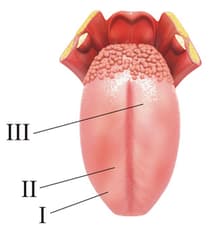Embibe Experts Solutions for Chapter: Digestion and Absorption, Exercise 1: AP EAPCET 2020 (24-Sep Shift-1)
Embibe Experts Biology Solutions for Exercise - Embibe Experts Solutions for Chapter: Digestion and Absorption, Exercise 1: AP EAPCET 2020 (24-Sep Shift-1)
Attempt the practice questions on Chapter 35: Digestion and Absorption, Exercise 1: AP EAPCET 2020 (24-Sep Shift-1) with hints and solutions to strengthen your understanding. EMBIBE CHAPTER WISE PREVIOUS YEAR PAPERS FOR BIOLOGY solutions are prepared by Experienced Embibe Experts.
Questions from Embibe Experts Solutions for Chapter: Digestion and Absorption, Exercise 1: AP EAPCET 2020 (24-Sep Shift-1) with Hints & Solutions
In a T. S. of the human small intestine, serosa is the outermost layer and is made up of a thin __A__. Muscularis is formed by the smooth muscles arranged outer __B__ and inner __C__. Sub-mucosa is formed by the __D__. Mucosa is the innermost layer made of __E__.
Following are different layers in the wall of the alimentary canal of man
I) Longitudinal muscles
II) Mucosa
III) Serosa
IV) Circular muscles
V) Submucosa
Arrange them in the correct sequence from the outer to the inner side
Study the following diagram of human tongue and identify the part I, II, and III

Enterohepatic circulation of bile salts refers to
a) Circulation of bile juice between gall bladder and the liver through the cystic duct.
b) Combining of bile acids with sodium to form bile salts.
c) Bile salts after emulsification are absorbed back into the blood and are used in the liver for bile juice.
d) Bile salts of chylomicrons are released into the blood and are carried to the liver where they are not used in the formation of bile juice.
Fluoride pollution initially affects:
